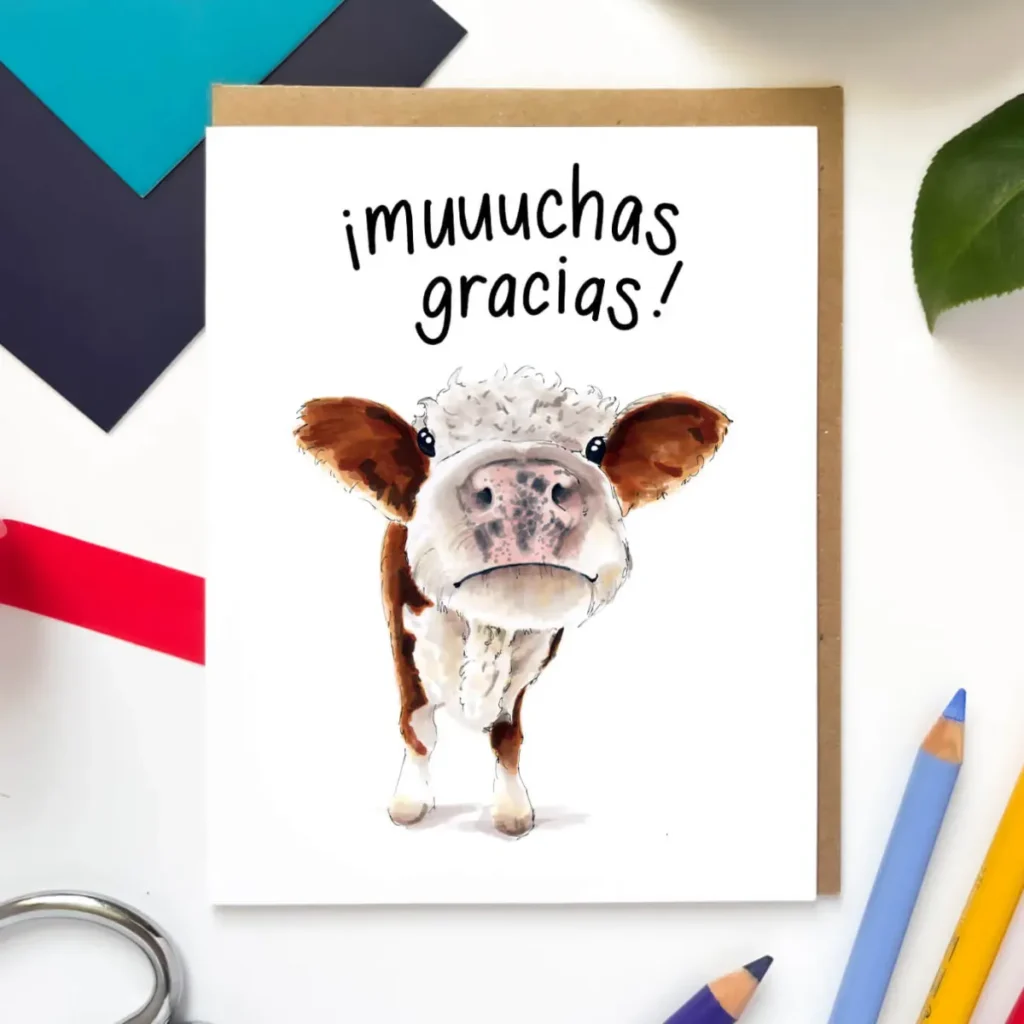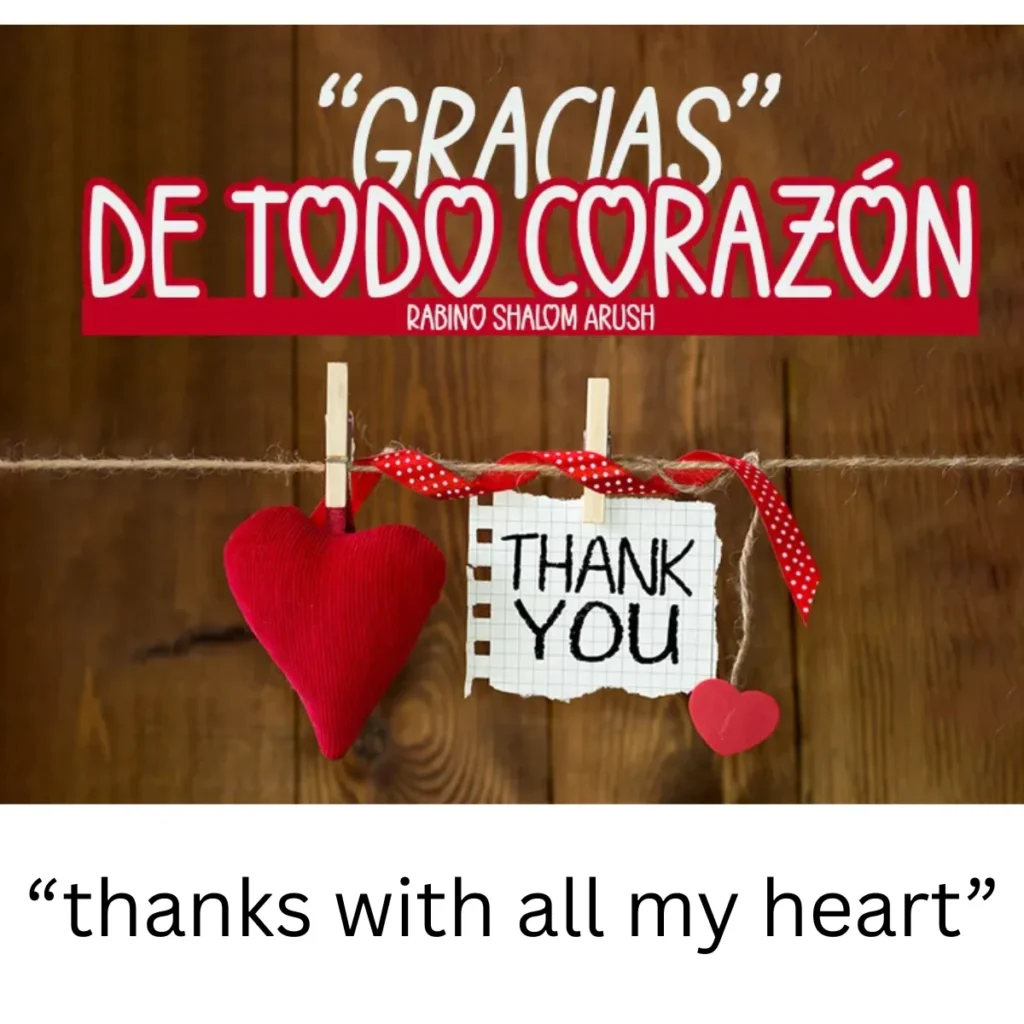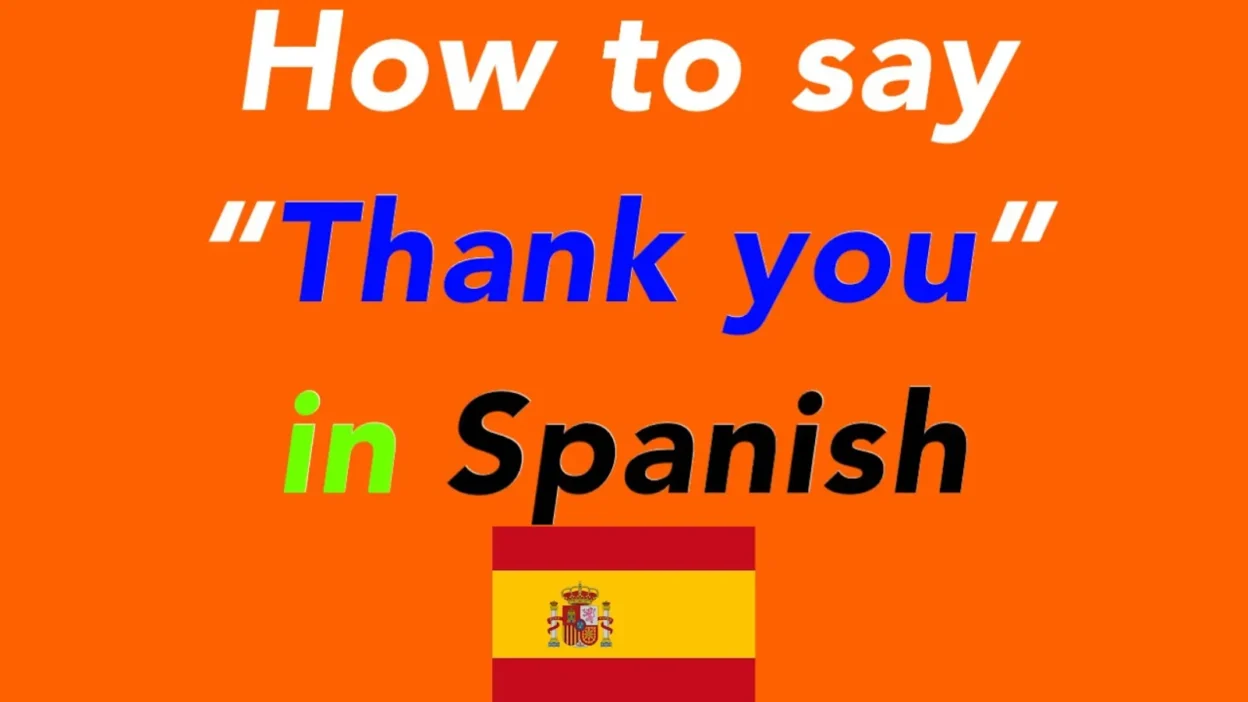How to Say Thank You in Spanish is one of the most important things to learn when starting the language. Saying thank you is a simple yet powerful way to show appreciation and respect in any culture, and Spanish is no exception.
In this guide, you’ll discover the most common ways to express gratitude in Spanish, including both formal and informal phrases.
Learning how to say thank you in Spanish will help you connect more genuinely with native speakers. It’s a phrase you’ll use every day—whether traveling, working, or making new friends. With a little practice, how to say thank you in Spanish will become second nature in your conversations.
Thank You in Spanish Examples & Origins
Let’s explore 15 real and culturally relevant ways to say thank you in Spanish, complete with example conversations and origins behind the phrases.
15 Ways to Say Thank You in Spanish
| # | Spanish Phrase | Meaning in English | When to Use |
|---|---|---|---|
| 1 | Gracias | Thank you | Everyday, general thanks |
| 2 | Muchas gracias | Thank you very much | When you appreciate something more |
| 3 | Muchísimas gracias | Thank you so much | Strong gratitude |
| 4 | Mil gracias | A thousand thanks | Friendly and emotional |
| 5 | Te lo agradezco | I appreciate it (informal) | Thanking a friend or someone close |
| 6 | Se lo agradezco | I appreciate it (formal) | Polite situations, customer service, elders |
| 7 | Gracias por todo | Thank you for everything | When someone did a lot for you |
| 8 | Gracias por tu ayuda | Thank you for your help (informal) | Thanking a friend or coworker you know |
| 9 | Gracias por su ayuda | Thank you for your help (formal) | Thanking a stranger, teacher, or elder |
| 10 | Gracias de corazón | Thank you from the heart | Deep emotional gratitude |
| 11 | Estoy muy agradecido/a | I am very grateful | Sincere and respectful |
| 12 | Te doy las gracias | I give you my thanks (informal) | Personal and warm |
| 13 | Le doy las gracias | I give you my thanks (formal) | Polite and respectful tone |
| 14 | Mucho gusto y gracias | Nice to meet you and thank you | First meetings + gratitude |
| 15 | Gracias por venir | Thank you for coming | Events, gatherings, invitations |
1. Gracias
Origin:
This is the most common and direct translation of thank you in Spanish. It comes from the Latin word gratia, meaning “favor” or “kindness.”
Example:
👤 User A: Aquí tienes tu café.
👤 User B: ¡Gracias!
Use: Standard and universal; polite and widely accepted in all Spanish-speaking countries.
2. Muchas gracias

Origin:
Literally means “many thanks.” It adds emphasis to “gracias” and is often used to express deeper appreciation.
Example:
👤 User A: Te ayudé con el informe.
👤 User B: ¡Muchas gracias! No lo habría hecho sin ti.
Use: Slightly more formal or emphatic than “gracias.”
3. Muchísimas gracias
Origin:
An even stronger version of “muchas gracias.” The suffix -ísimas exaggerates the intensity.
Example:
👤 User A: Te cubrí el turno completo.
👤 User B: ¡Muchísimas gracias! ¡De verdad!
Use: Very emphatic; shows deep appreciation or relief.
4. Mil gracias
Origin:
Literally means “a thousand thanks.” It’s a poetic way of showing abundant gratitude.
Example:
👤 User A: Te traje los apuntes que perdiste.
👤 User B: ¡Mil gracias! Eres un ángel.
Use: Expressive and slightly dramatic; used informally but warmly.
5. Gracias de todo corazón

Origin:
Translates to “thanks with all my heart.” Adds emotional depth to your gratitude.
Example:
👤 User A: Lamento tu pérdida. Aquí estoy para ti.
👤 User B: Gracias de todo corazón.
Use: Deep and heartfelt; often used in emotional situations.
6. Te lo agradezco
Origin:
Means “I thank you for it” or “I appreciate it.” Comes from the verb agradecer.
Example:
👤 User A: Hice tu tarea por ti.
👤 User B: Te lo agradezco mucho.
Use: More personal than just “gracias”; good for formal or polite settings.
7. Le agradezco
Origin:
The formal version of “te lo agradezco,” using usted form for respect.
Example:
👤 User A: Aquí tiene su factura.
👤 User B: Le agradezco su atención.
Use: Formal, respectful; great for customer service or professional use.
8. Estoy muy agradecido/a
Origin:
Means “I am very grateful.” Masculine (agradecido) or feminine (agradecida), depending on the speaker’s gender.
Example:
👤 User A: Pagué tu matrícula.
👤 User B: Estoy muy agradecida por todo lo que hiciste.
Use: Formal and sincere; used in speeches, letters, or emotional settings.
9. Se lo agradezco de verdad

Origin:
A formal and sincere phrase meaning “I truly appreciate it.” Combines agradecer with de verdad (truly).
Example:
👤 User A: Lo acompañé durante la cirugía.
👤 User B: Se lo agradezco de verdad.
Use: Formal and honest; useful in sensitive situations.
10. Un millón de gracias
Origin:
Means “a million thanks.” Common in casual, friendly settings when you want to express big appreciation.
Example:
👤 User A: Te presté mi coche el fin de semana.
👤 User B: ¡Un millón de gracias!
Use: Very enthusiastic and expressive; informal and warm.
11. Gracias mil
Origin:
A reversed form of “mil gracias,” often used in Spain or poetic writing.
Example:
👤 User A: Te traje el libro que buscabas.
👤 User B: ¡Gracias mil! Justo lo necesitaba.
Use: Casual, sometimes literary or artistic.
12. Infinitas gracias
Origin:
Means “infinite thanks.” A dramatic and emotional way to show boundless appreciation.
Example:
👤 User A: Te doné un riñón.
👤 User B: ¡Infinitas gracias! Me salvaste la vida.
Use: Used in serious, grateful moments—or humorously for exaggeration.
13. Muy amable
Origin:
Literally “very kind.” Not a direct “thank you,” but a polite way to express appreciation in Latin American culture.
Example:
👤 User A: Le abrí la puerta.
👤 User B: Muy amable, gracias.
Use: Polite and respectful; often paired with “gracias.”
14. Gracias por todo

Origin:
Means “thank you for everything.” A nice way to wrap up your gratitude after receiving help or hospitality.
Example:
👤 User A: Espero que hayas disfrutado la cena.
👤 User B: ¡Gracias por todo! Todo estuvo delicioso.
Use: Casual or formal depending on tone.
15. Gracias mil veces
Origin:
“Thanks a thousand times.” More intense than “mil gracias” — used to emphasize repeated gratitude.
Example:
👤 User A: Te ayudé con todo el papeleo.
👤 User B: ¡Gracias mil veces! No sé cómo agradecerte.
Use: Dramatic, warm, and expressive.
FAQs
1. What is the most common way to say Thank You in Spanish?
The most common phrase is “Gracias.”
2. How do I say Thank You very much?
Say “Muchas gracias.” It means thank you very much.
3. How do I say Thanks a lot casually?
You can say “Gracias” or “Mil gracias.”
4. How do I say Thank You politely?
Use “Le agradezco” (formal) or “Te agradezco” (informal).
5. How do I say Thank You for your help?
- Formal: Gracias por su ayuda.
- Informal: Gracias por tu ayuda.
6. How do I respond when someone says Gracias?
The most common response is “De nada.” (You’re welcome)
7. What is another friendly way to say You’re welcome?
Say “Con gusto” (with pleasure) or “No hay de qué.”
8. Can I use Gracias in messages or chats?
Yes! “Gracias 😊” is commonly used in text, WhatsApp, and social media.
9. How do I express deep gratitude?
Say “Muchísimas gracias” or “Te lo agradezco de corazón.”
10. Is Gracias used in all Spanish-speaking countries?
Yes, “Gracias” is universal across Spain, Mexico, and Latin America.
Conclusion:
Now that you know how to say thank you in Spanish, you can confidently express gratitude in any setting—from casual chats to formal conversations. Using the right phrase shows respect and appreciation for the Spanish-speaking culture.
Keep practicing how to say thank you in Spanish to strengthen your language skills and make your interactions more meaningful.



